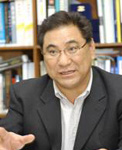

|
Mission Statement The main weather phenomena in the Asia-Oceania region are monsoon and severe tropical cyclones locally known as typhoons. Monsoon is important because it helps in the cultivation of different food crops particularly –paddy crops which is the staple food for the people of this region. The interannual variation of monsoon is important because weak monsoon condition may lead to drought and failure of crops and hence can affect the economy of a country. On the contrary vigorous monsoon can cause floods. In order to understand the vagaries of monsoon more research work has to be done in the region so that the forewarning or forecasting could be done about the behavior of monsoon. In that case the farmers and agriculturists would be able to take proper action. Typhoons cause disasters like loss of life and property every year. About 25 typhoons form over the West Pacific region every year. Proper research studies should be conducted to study the structure and behaviour of typhoons. For this optimization of conventional meteorological observations, satellite observations, radar observations are necessary. Aircraft reconnaissance should be done to assess the intensity and structure of typhoons. If these are done successfully the disaster management would be facilitated. Moreover, the energy released by a typhoon is tremendous, even if it is possible to harness a small percentage of this energy, it would go a long way to help the people in this region. An attempt should be made to achieve this. The world is facing a change in the climate. Climate change has many adverse effects. It is apprehended that global warming may cause the rise of sea level in near future. Countries in this region would be adversely affected if sea level rises. Actually coastal areas of all countries in this region would go under water causing reduction of habitable area. Because of this people will be homeless. The main cause of this global warming is the increase in CO2 content in the atmosphere. This has to be prevented at any cost; otherwise we have to face doomsday. Strong measures have to be taken by the government and Non–Governmental Organizations (NGOs) so that less amount of CO2 is injected in the atmosphere. I am an atmospheric scientist and have done academic and research studies as well as weather forecasting. I am aware of the adverse effects of the weather phenomena which are observed in this region. I also know how difficult is the job of taking appropriate and strong measures to reduce the adverse effect of the disastrous weather events. If elected, I shall take the measures to reduce the adverse effect of the atmospheric phenomena. It can be done in several ways by pursuing the governmental agency to take appropriate measures. We have also to involve NGO’s in order to achieve our goal. More funding in research and disaster mitigation work is imperative. My objective would be to see that the people in this region live happily.
|
Conference
News |

